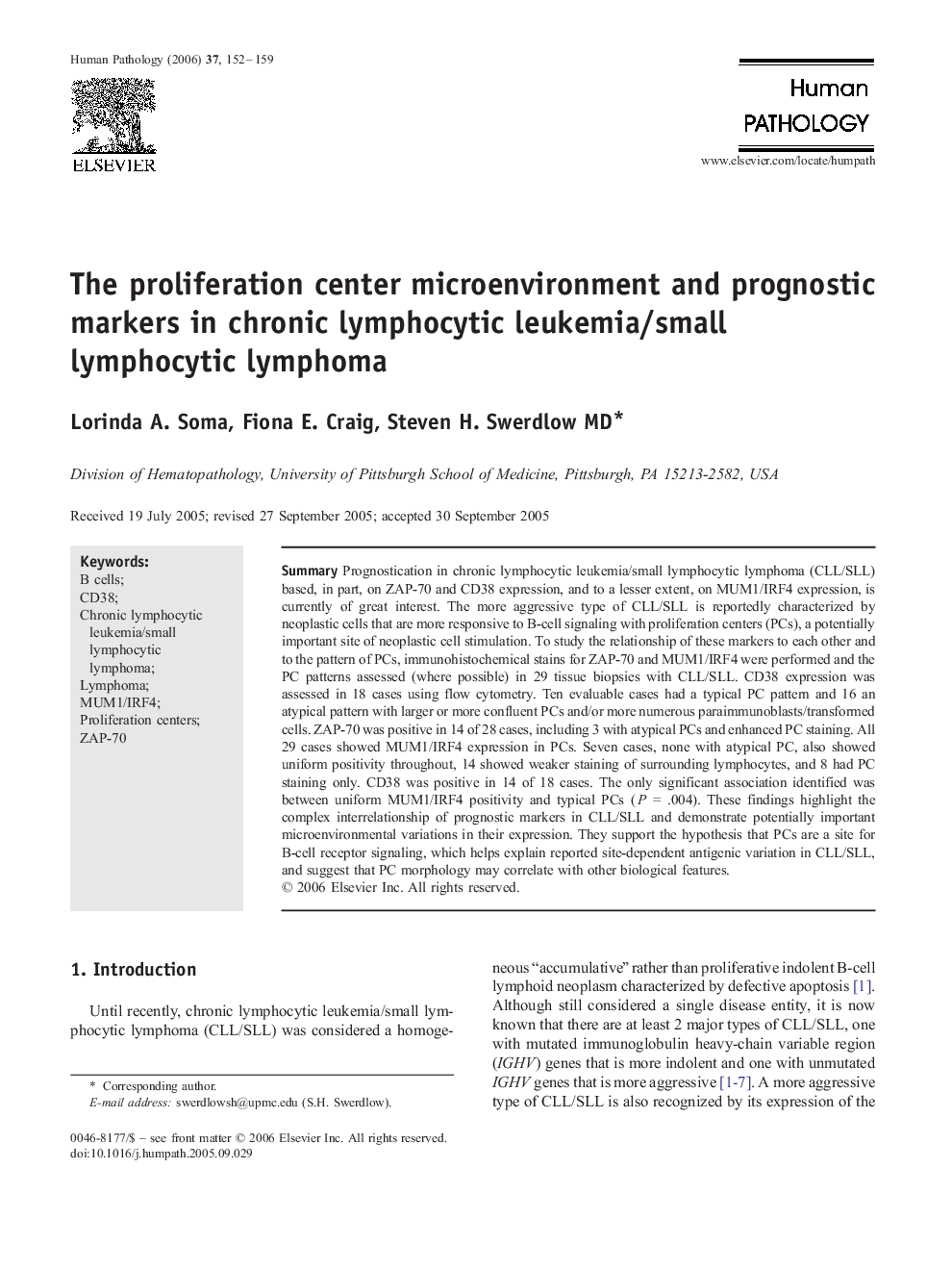| Article ID | Journal | Published Year | Pages | File Type |
|---|---|---|---|---|
| 4135457 | Human Pathology | 2006 | 8 Pages |
SummaryPrognostication in chronic lymphocytic leukemia/small lymphocytic lymphoma (CLL/SLL) based, in part, on ZAP-70 and CD38 expression, and to a lesser extent, on MUM1/IRF4 expression, is currently of great interest. The more aggressive type of CLL/SLL is reportedly characterized by neoplastic cells that are more responsive to B-cell signaling with proliferation centers (PCs), a potentially important site of neoplastic cell stimulation. To study the relationship of these markers to each other and to the pattern of PCs, immunohistochemical stains for ZAP-70 and MUM1/IRF4 were performed and the PC patterns assessed (where possible) in 29 tissue biopsies with CLL/SLL. CD38 expression was assessed in 18 cases using flow cytometry. Ten evaluable cases had a typical PC pattern and 16 an atypical pattern with larger or more confluent PCs and/or more numerous paraimmunoblasts/transformed cells. ZAP-70 was positive in 14 of 28 cases, including 3 with atypical PCs and enhanced PC staining. All 29 cases showed MUM1/IRF4 expression in PCs. Seven cases, none with atypical PC, also showed uniform positivity throughout, 14 showed weaker staining of surrounding lymphocytes, and 8 had PC staining only. CD38 was positive in 14 of 18 cases. The only significant association identified was between uniform MUM1/IRF4 positivity and typical PCs (P = .004). These findings highlight the complex interrelationship of prognostic markers in CLL/SLL and demonstrate potentially important microenvironmental variations in their expression. They support the hypothesis that PCs are a site for B-cell receptor signaling, which helps explain reported site-dependent antigenic variation in CLL/SLL, and suggest that PC morphology may correlate with other biological features.
